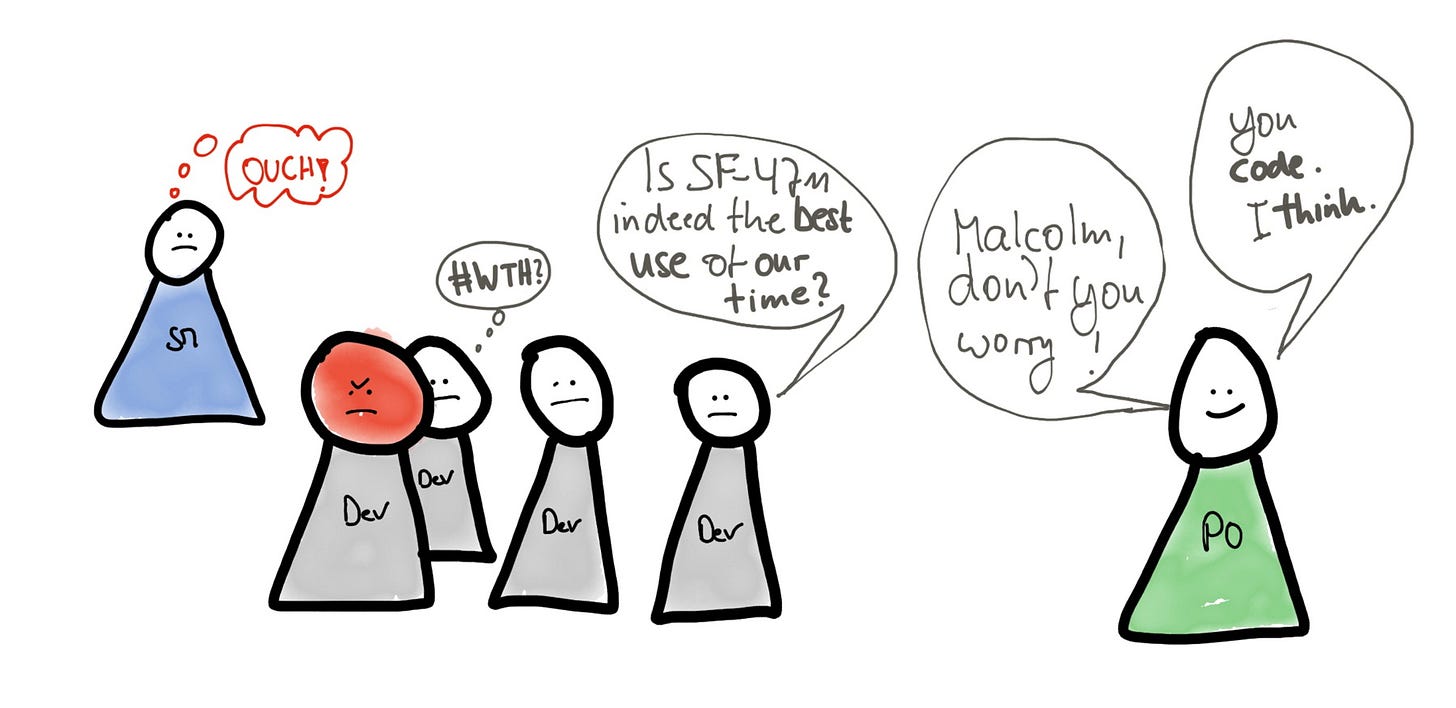Hello everyone!
Welcome to the second excursion into Scrum anti-patterns. Today, we will consider the Product Owner.
No other role in Scrum can contribute to mediocre outcomes like the Product Owner—garbage in, garbage out. Scrum is a team sport; there are no loners on a successful Scrum Team where collaboration and alignment are prerequisites for success.
Moreover, a Product Owner prone to making lone decisions is in danger of loving their solution over the customers’ problems. Consequently, collaborating and aligning with their teammates on the Product Goal and the Product Backlog is a proven risk-mitigation strategy for Product Owners, a testament to Scrum’s built-in checks and balances.
The Role of the Product Owner According to the Scrum Guide
The Scrum Guide characterizes the job of the Product Owner as follows:
Maximizing the product’s value resulting from the Scrum Team’s work.
Developing and explicitly communicating the Product Goal.
Managing the Product Backlog, including delegating responsibilities while remaining accountable.
Communicating with stakeholders and representing the needs in the Product Backlog through direct communication or Scrum events such as the Sprint Review.
Ensuring that the Product Backlog is transparent, visible, and understood.
Ordering Product Backlog items.
Defining business objectives for Sprints.
Canceling Sprints if a Sprint Goal becomes obsolete1.
How Product Owner Anti-Patterns Manifest Themselves
Most Product Owner anti-patterns result from misunderstanding the Product Backlog management aspect at the heart of the Product Owner’s responsibilities. Notably, less successful Product Owners fail to communicate with teammates and stakeholders. Maximizing the value of the Scrum Team’s work from a customer perspective while contributing to the organization’s bottom line within the given constraints is less a question of project management skills, juggling with product requirement documents, or keeping the Jira up-to-date.
Consequently, successful Product Owners spend less time on actually handling the Product Backlog than they allocate to product discovery in general and creating alignment among all players in particular. To them, the Product Backlog is a means to an end, not the purpose of their existence.
The Successful Product Owner
Instead, successful Product Owners spend time creating a transparent system that allows identifying potentially valuable ideas from all sources, relentlessly communicating the “Why,” and collaborating with the Developers on the “What.”
Food for Thought
Product Owner vs. Product Manager: Do we need a product manager in an organization dedicated to practicing Scrum? Often, particularly in larger organizations, we notice a separation between these two roles: The Product Owner is a tactical job at the team level, delivering what the product manager created at the organizational level. Is this a beneficial division of responsibilities, given that our Product Owner, according to the process described in the chapter on Product Backlog management, is also responsible for product discovery?
Over the following weeks and months, we will explore Product Owner anti-patterns in depth, from their manifestations to the reasons why you can observe them and what you can do to help your Product Owner overcome them. Topics will range from the Copy&Paste PO to the oversized Product Backlog to crowding out collaboration to not involving their teammates.
If you have any questions, please let me know.
Best,
Stefan
Ken Schwaber & Jeff Sutherland: The Scrum Guide — The Definitive Guide to Scrum: The Rules of the Game, 2020.




